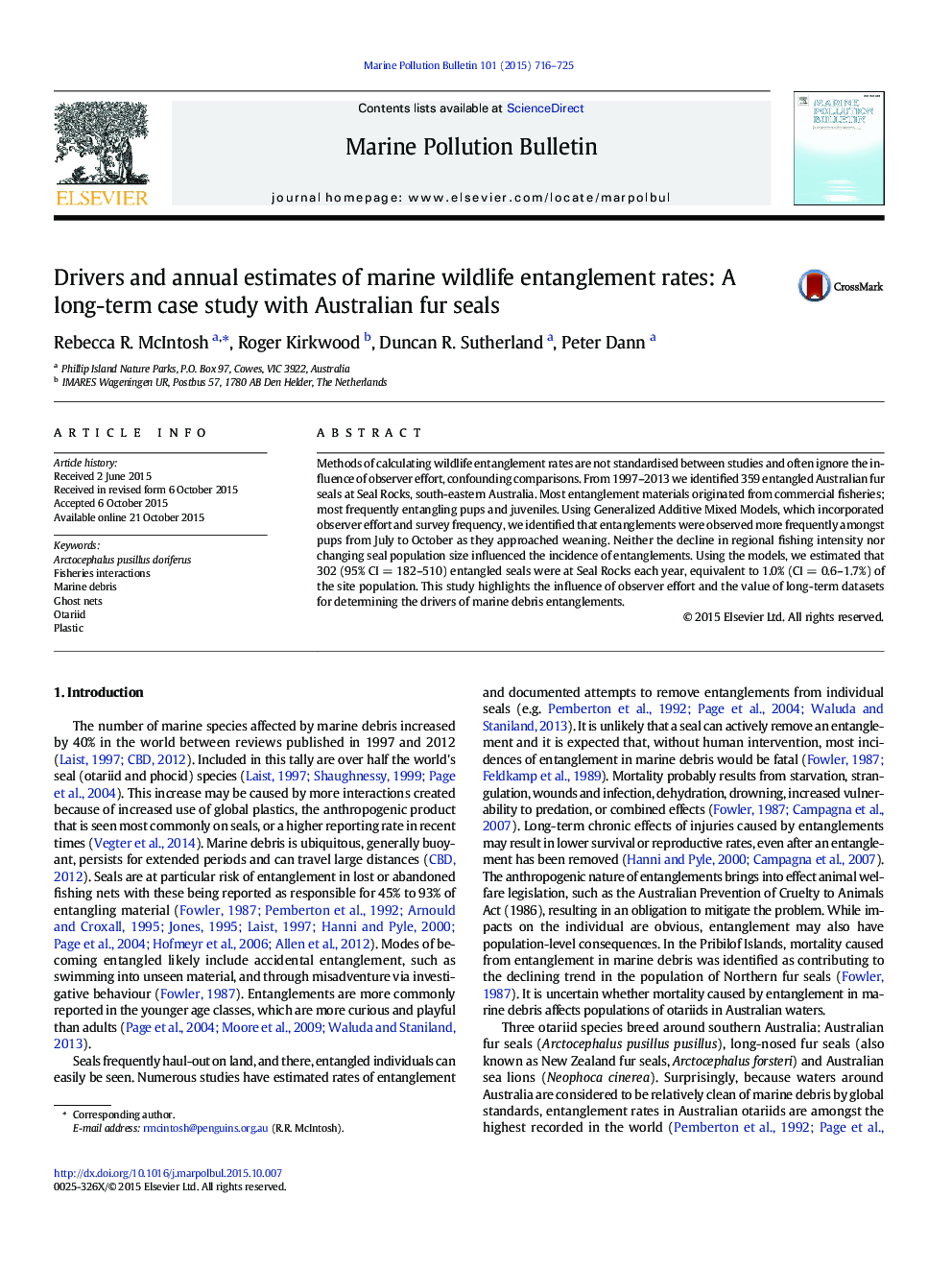| Article ID | Journal | Published Year | Pages | File Type |
|---|---|---|---|---|
| 6356445 | Marine Pollution Bulletin | 2015 | 10 Pages |
Abstract
Methods of calculating wildlife entanglement rates are not standardised between studies and often ignore the influence of observer effort, confounding comparisons. From 1997-2013 we identified 359 entangled Australian fur seals at Seal Rocks, south-eastern Australia. Most entanglement materials originated from commercial fisheries; most frequently entangling pups and juveniles. Using Generalized Additive Mixed Models, which incorporated observer effort and survey frequency, we identified that entanglements were observed more frequently amongst pups from July to October as they approached weaning. Neither the decline in regional fishing intensity nor changing seal population size influenced the incidence of entanglements. Using the models, we estimated that 302 (95% CIÂ =Â 182-510) entangled seals were at Seal Rocks each year, equivalent to 1.0% (CIÂ =Â 0.6-1.7%) of the site population. This study highlights the influence of observer effort and the value of long-term datasets for determining the drivers of marine debris entanglements.
Related Topics
Physical Sciences and Engineering
Earth and Planetary Sciences
Oceanography
Authors
Rebecca R. McIntosh, Roger Kirkwood, Duncan R. Sutherland, Peter Dann,
